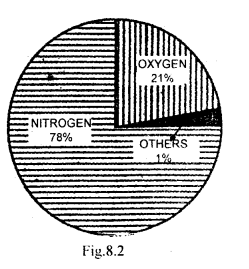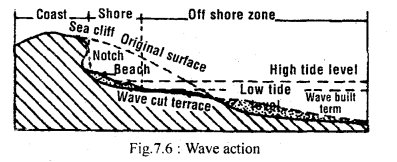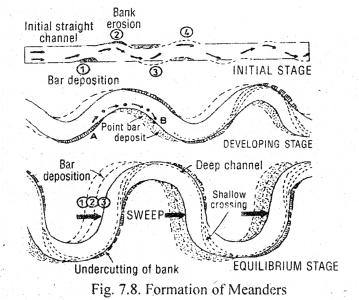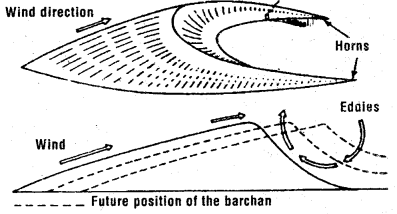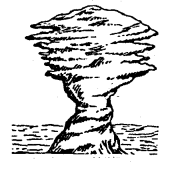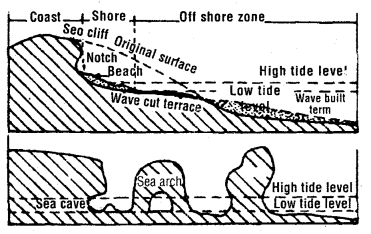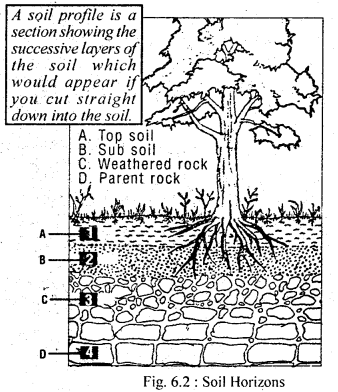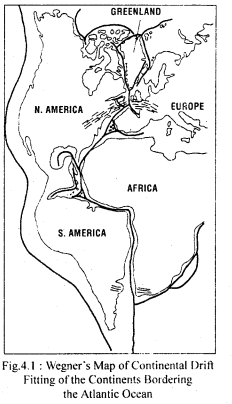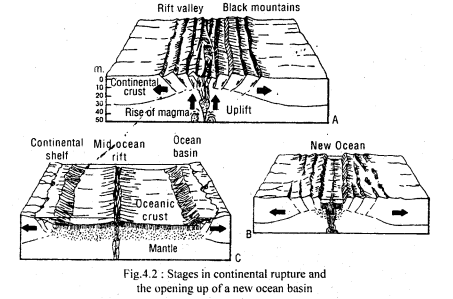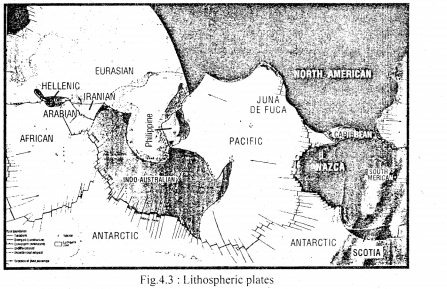Here we are providing Class 11 Geography Important Extra Questions and Answers Chapter 8 Composition and Structure of Atmosphere. Important Questions for Class 11 Geography are the best resource for students which helps in class 11 board exams.
Important Questions for Class 11 Geography Chapter 8 Composition and Structure of Atmosphere
Composition and Structure of Atmosphere Important Extra Questions Very Short Answer Type
Question 1.
How is the atmosphere held to the earth?
Answer:
The atmosphere is held to the earth by the force of gravity.
Question 2.
What is heterosphere?
Answer:
The layer of the atmosphere 90 km above the surface of the earth where the composition begins to change with a progressive increase in the lighter gases, is called heterosphere.
Question 3.
Which are the major constituents of clean dry air of atmosphere?
Answer:
Oxygen and nitrogen are the major constituents of clean dry air of the atmosphere.
Question 4.
Which gas of the atmosphere does not take part in a chemical reaction?
Answer:
‘Argon’ does not take part in a chemical reaction.
Question 5.
What are aerosols?
Answer:
Aerosols are huge amounts of s0lid and liquid particles present in the atmosphere.
Question 6.
Which gas despite its small percentage is crucial in atmospheric processes?
Answer:
Carbon dioxide is an important gas in the atmospheric processes.
Question 7.
What is the atmosphere?
Answer:
The atmosphere is a gaseous envelope extending thousands of kilometres above the earth’s surface.
Question 8.
What energises the atmosphere?
Answer:
The atmosphere is energised by the sun.
Question 9.
Where does much of life exist on the earth?
Answer:
Much of life exists at the bottom of the atmosphere where it meets the lithosphere and the hydrosphere.
Question 10.
Name two broad layers of the atmosphere.
Answer:
Homosphere and heterosphere are two broad layers of the atmosphere.
Question 11.
Name the three thermal layers of the homosphere.
Answer:
Troposphere, stratosphere and mesosphere.
Question 12.
What is wind?
Answer:
The horizontal motion of the air is known as wind.
Question 13.
Mention some forms of precipitation.
Answer:
Rain, hail, sleet or snow are some forms of precipitation.
Question 14.
Which gas acts as a filter and protects us from ultraviolet rays?
Answer:
Ozone gas protects us from the ultraviolet rays and acts as a filter.
Question 15.
Which layer transmits the radio waves?
Answer:
Ionosphere.
Question 16.
Name the gas which is found in the upper part of the atmosphere.
Answer:
Hydrogen.
Question 17.
What are the two causes of depletion of the ozone layer?
Answer:
Use of carbons and deforestation are the two causes of depletion of the ozone layer.
Question 18.
Name the gas which is most essential for life.
Answer:
Oxygen.
Question 19.
What are the principal elements of weather and climate?
Answer:
Temperature, pressure, wind, moisture and precipitation are the principal elements of weather and climate.
Question 20.
Why do the jet aircraft fly through the lower stratosphere?
Answer:
Because it provides the easiest flying conditions. It is the layer of calm and clean air. There is no water vapour and clouds are present.
Question 21.
What are the constituents of dust particles?
Answer:
Smoke-soot, ash, pollen are the main constituents of dust particles.
Question 22.
What is the weather?
Answer:
The cumulative effect of wind, temperature, pressure, clouds, humidity and precipitation is called weather.
Question 23.
What is the role of elements of weather?
Answer:
They influence temperature and precipitation.
Composition and Structure of Atmosphere Important Extra Questions Short Answer Type
Question 1.
Why are the vapour and dust particles important variables of weather and climate?
Answer:
The water vapour and dust particles are important variables of weather and climate because they are the source of all forms of condensation and principal absorbers of heat received from the sun or radiated from the earth. Besides, they affect the stability of the atmosphere.
Question 2.
What is meant by a normal lapse rate?
Answer:
The temperature decreases with altitude because the atmosphere is heated more by the heat radiated from the earth’s surface. Wanner air lying under the cooler air goes up or turns downward. In this layer, the temperature decreases vertically at a rate of 0.65°C per 100 metres. It is called the normal lapse rate.
Question 3.
What is homosphere?
Answer:
The atmospheric layer up to an altitude of 90 km. above the surface of the earth is generally called homosphere. It is uniform in term of these major gases – nitrogen, oxygen and argon. In addition, it also contains some rare gases like neon, krypton and xenon.
Question 4.
Name the gases and other materials which compose the atmosphere.
Answer:
Nitrogen, oxygen and argon are the most important gases of the atmosphere. In addition, it contains gases like carbon dioxide, neon, helium, ozone, hydrogen, methane, krypton and xenon. Besides, there are also present huge amounts of solid and liquid particles collectively called aerosols.
Question 5.
Discuss the properties of nitrogen gas.
Answer:
Nitrogen is the most abundant gas of the atmosphere. By volume, it constitutes 78.8% of the total gases present in the atmosphere. Nitrogen does not easily enter into chemical union with other substances but gets fixed into the soil. It serves mainly as diluent or dissolver. It regulates combustion.
Question 6.
What is the importance of carbon dioxide on the earth?
Answer:
By volume carbon dioxide constitutes 0.03% of the total gases of the earth’s atmosphere. Although it forms a small portion, it is an important gas in the atmospheric processes. It can absorb the heat and thus allows the lower atmosphere to be warmed up by heat radiation coming from the sun and from the earth’s surface. Green plants in the process of photosynthesis utilise carbon dioxide from the atmosphere.
Question 7.
Explain the difference between weather and climate.
Answer:
The weather of any place is the sum total of its temperature, pressure, winds, moisture and precipitation conditions for a short period of time. Climate, on the other hand, is the composite weather conditions over a considerable period of time.
Question 8.
Identify the climatic controls.
Answer:
The various climatic controls are given below :
- Latitude or sun.
- Distribution of land and water
- The great semi-permanent high and low-pressure belts
- Winds
- Altitude
- Mountain barriers
- Ocean currents
- Storms of various kinds
Question 9.
What is the importance of the atmosphere for the earth?
Answer:
The earth is the only known planet to have life. The atmosphere, which is unlike that of any other planet, encircles and protects the earth. Changes in the composition of the atmosphere are closely associated with the evolution of the earth. One of the most important transition was the increase in oxygen when photosynthetic plants evolved.
The atmosphere is a mixture of gases, the largest proportion of which is nitrogen. However, the most important is oxygen, without which life could not be sustained. The very survival of life processes is associated with the atmosphere.
The influence of the atmosphere on humans particularly is not only direct but also indirect through natural vegetation, soil and topography.
Question 10.
What is tropopause?
Answer:
The tropopause is the plane which separates the troposphere and stratosphere. It is the boundary between these two layers. It is a thin transitional zone between two layers.
Question 11.
Explain three major features of the troposphere.
Answer:
Three major features are :
- It is 16 km thick at the equator and 10 km thick at the poles.
- The temperature decreases with the altitude at the rate of l°C per 165 metres.
- Biological activities take place in this layer.
Question 12.
What are the main characteristics of the lowermost layer of the atmosphere?
Answer:
The lowermost layer is the troposphere.
- Its average height is 16-18 km.
- All biological activities occur in this layer.
- All the atmospheric processes take place in this layer.
- It is 16 km thick at the equator and 10 km thick at the poles.
Composition and Structure of Atmosphere Important Extra Questions Long Answer Type
Question 1.
Distinguish between troposphere and stratosphere.
Answer:
| Troposphere | Stratosphere |
| (1) It is the lowermost layer of the atmosphere. | (1) It is the second layer of the atmosphere above the earth. |
| (2) Its height varies from 10-18 km. at the equator. | (2) Its height is up to 50 km. |
| (3) Temperature decreases at the rate of 1 °C per 165 metres in this layer. | (3) In this layer temperature is very low and fairly constant. |
| (4) It is the zone of convection currents of the atmosphere. | (4) It is a zone of non-convection currents of the atmosphere. |
| (5) Water vapour, dust particles, clouds are found in this layer. | (5) There is no water vapour but dust particles and clouds are found. |
| (6) Atmospheric processes occur in this layer. | (6) This zone is free from atmospheric disturbances. |
Question 2.
What is the difference between condensation and precipitation?
Answer:
Condensation is the physical process of the transition of a substance from the vapour to the liquid state, e.g., as a result of cooling or increase of pressure. It occurs in the atmosphere when the air is saturated or when it is cool. Thus, the change of state of the moisture from invisible water vapour to visible liquid (water) or solid (ice or snow ) state is known n as condensation. It is opposite of evaporation.
Precipitation, on the other hand, means ‘throwing down of moisture’. Continuous condensation in the body of the air helps the water droplets to grow in size so that the resistance of the air fails to keep them suspended. In such cases, only an ascending air current can keep them floating in the air. In the absence of such a current, the products of condensation begin to fall on the earth’s surface. The process whereby the water vapour first condenses in the air and then falls on to the earth is called precipitation.
Question 3.
Discuss the principal elements of weather and climate and the major climatic controls.
Answer:
The principal elements of weather and climate are temperature precipitation, moisture, pressure and winds. These are called elements because they are the ingredients out of which various weather and climate types are compounded. The temperature and precipitation are the main basic elements to which pressure, winds and other elements are related.
Temperature expresses the intensity of heat. Practically all the heat energy on the earth is the result of insulation or the increasing solar radiation. Unequal distribution of temperature over the earth’s surface causes differences in atmospheric pressure, which causes winds.
Higher the temperature, the greater is the capacity’ of air to hold moisture on cooling. The air is not able to retain all the moisture it gathers while warm. This leads to condensation and precipitation.
Thus, the temperature is the basic element on which other elements of climate depend.
The climatic controls are :
Latitude (or sun), distribution of land and water, the great semi¬permanent high and low-pressure belts, winds, altitude, mountain barriers, ocean currents and storms of various kinds.
Question 4.
Define the atmosphere. Explain its importance to human life.
Answer:
The atmosphere is a mixture of air and various gases which envelopes the earth all around. It represents the gaseous realm of the earth. It is held to the earth by the force of gravity.
Importance of atmosphere:
- It contains gases like oxygen (essential for breathing) for man and animals and carbon dioxide for plants.
- By trapping the heat, it acts as a greenhouse. It keeps the earth
warm. - One of its layer, the ionosphere, reflects radio waves back to the earth and makes radio communication possible.
- It protects us from the deadly cosmic rays and meteors which are continuously showered on the earth from outer space.
- All the weather phenomenon take place in the atmosphere. Presence of water vapour in the atmosphere brings many changes such as condensation and precipitation. These processes influence the human life, plants and animals.
- It absorbs ultraviolet rays.
- It acts as an air conditioner by moderating the extremes of heat ‘ and cold.
- It is a storehouse of water vapour.
Question 5.
Discuss the proportion of the constituent gases of the atmosphere.
Answer:
The atmosphere is a mixture of various gases. It includes :
Nitrogen (N,), Oxygen (O,), Argon (Ar), Carbon dioxide (CO,), Neon (Ne), Helium (He), Ozone (O,), Hydrogen (H), Methane (CH4), Krypton (Kr) and Xenon (Xe).
Nitrogen (N2): It is a colourless, odourless gas, the main constituent (i.e. 78.8% by volume) of the atmosphere. It is an essential constituent of living organisms. It is an important element for plants.
Oxygen (O,): Constitutes 20.94% of the total volume of the atmosphere. It is the second most abundant gas. It is essential to plant and animal life.
Argon (Ar): It constitutes one per cent volume of the total atmosphere. It is an inert gas, does not take part in any chemical reaction.
Carbon dioxide: It constitutes a very small amount (0.03%). It is an important gas in the atmospheric process. It can absorb heat and thus allows the lower atmosphere to be warmed up by heat radiation from the sun and from the earth’s surface. Green plants in the process of photosynthesis utilise carbon dioxide from the atmosphere.
Neon (Ne): Neon is an inert gaseous element occurring in’ trivial quantities (0.0018%) in the atmosphere.
Helium (He): It exists primarily in the sun’s atmosphere. It is an inert element of the atmosphere.
Ozone (03): It is an allotropic form of oxygen (02). Its main concentration lies between 20 to 25 km. from the earth’s surface.
Hydrogen (H): It is the lightest element. It is gaseous and inflammable. It is used in many chemical processes.
